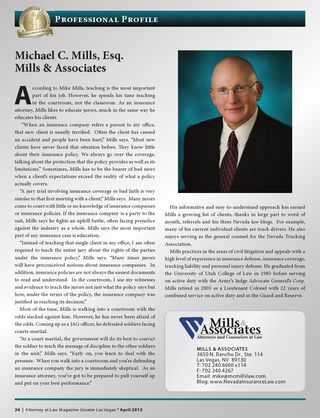The Red Queen’s favorite cry may make her life more enjoyable but certainly would have a negative impact on the enjoyment of life of those around her. If one of her subjects brought a suit against her, she might find herself facing a claim for hedonic damages.
In Banks v. Sunrise Hospital, 120 Nev. 822, 102 P.3d 52 (2004) Nevada joined the increasing number of states which allow an award for hedonic damages stating:
…damages for “loss of enjoyment of life” compensate for the limitations, resulting from the defendant’s negligence on the injured person’s ability to participate in and derive pleasure from the normal activities of daily life, or for the individual’s inability to pursue his talents, recreational interests, hobbies, or avocations.
In Nevada hedonic damages are treated as another element of pain and suffering but with a twist. Normally testimony about pain and suffering is based on the Plaintiff’s subjective experience. However, where hedonic damages are involved, Nevada has allowed experts to calculate the value of the hedonic loss.
To prove a claim for hedonic damages, Plaintiff’s attorneys usually rely on economists to attempt to set a value of the loss of the enjoyment of life. The most commonly used method for calculating hedonic damages is called” willingness to pay” which has two components; “survey” and “wage risk”. The Survey assumes a town with a population of 20,000 people faced with a toxin which will cause three deaths. The townspeople are asked how much money they would be willing to spend to reduce the probability of death from 3 in 20,000 to 1 in 20,000. This is combined with a “wage risk” analysis which examines the salaries people receive for doing high risk jobs (policemen, firemen) and the amount of salary they would give up for a lower risk job. Using these calculations, the economic expert determines a “range of damages” representing the tangible value of a life.
Many economists are critical of “willingness to pay” because it does not consider the injured plaintiff’s specific characteristics or lifestyle and except for personal injury lawsuits is generally applied only to large groups.
While Nevada has generally approved of the use of hedonic damages, there are still many questions that need to be answered. For example, many jurisdictions exclude hedonic damage claims in the wrongful death cases. Whether the Nevada Supreme Court will allow hedonic damages in wrongful death cases is still unknown. Furthermore, for the most part, hedonics damages have been sought in catastrophic injury cases. To what extent the Nevada Supreme Court will allow hedonic damages in more common personal injury settings will need to be watched.
Michael Mills recommends that in catastrophic injury cases, one of the criteria for choosing a defense expert in economics is determining his approach and attitude towards hedonic damages.
 Follow
Follow Email
Email


